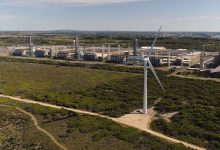Mining Industry Left Without Miners’ Lamp
Restructuring of the mining industry in Romania, started 20 years ago, has led to the disappearance of over 550,000 jobs and condemning extensive areas to poverty. All activities related to the mining industry, usually located in the same areas, have also been attracted in this decline. Thus, four companies that produced machinery for the mining industry, five institutes of research and design have disappeared and the secondary and higher education that trained specialists in this field has almost disappeared. Some of the mines that have been stopped have become, in time, real ecological bombs because the funds allocated to the closure, rehabilitation of the surfaces and their greening were insufficient.
Several strategies have been prepared over the years to relaunch mining in Romania, but basically nothing significant has happened. Towns such as those in Jiu Valley, Motru, Rovinari, Baia Sprie, Cavnic, Balan etc. have remained without their only source of income. For example, in Jiu Valley in the early ‘90s there was a population of over 142,000 inhabitants. Restructuring programs have led to the dismissal of approximately 40,000 employees. If we add the entire staff in the horizontal industry dedicated to the mining activity, other 20,000 persons, we realize that overnight an unemployment of over 50% of the active population was generated in the area.
14 Counties and one million people
Transformation occurred in the Romanian economy after 1989 and the measures adopted in the mining industry have generated the destruction of the field. In Romania there were 14 mining regions, spread over 16 counties: Arges, Dambovita, Prahova, Caras-Severin, Hunedoara, Alba, Bihor, Cluj, Salaj, Maramures, Bistrita-Nasaud, Suceava, Harghita, Covasna, Bacau and Tulcea. At the time of closure of the mining activity, 155 localities were more than 50% dependent on the revenues provided by the mining activity. All the components of the mining sector were affected, but metalliferous mining was hit the most. While in 2006, there were still over 8,000 persons working in the field, in 2012 their number barely exceeded 2,500. Moreover, there were over one million people working in total in the entire Romanian mining sector before 1990. Among them, 350,000 were direct employees as a result of the mining activity and the rest were working in activities serving this industry.
Mining according to a 16-year-old law
Currently, the law governing the mining activity is the Mining Law 85/2003. It was drawn up at a time when Romania was still negotiating its accession to the European Union and in an unfavourable economic context. Although in that period the European and national trend was of drastic reduction of the mining activity, the law did not treat the aspects that were to occur after the massive cessation of activity. It failed to regulate access to abandoned reserves/resources, the procedures of closure, rehabilitation and greening of the affected areas, and their correlation with the requirements of stakeholders (local communities, environmental authorities, water authorities etc.) was lacking. Thus, currently over 450 exploitation licenses concluded have not been approved by the Government for over 20 years. Functioning continues through legislative contrivances of the type of exploitation permits that do not confer the security necessary for serious investments in the perimeters in exploitation. On the other hand, the related legislation, on environment, water, hazardous mining waste was subsequently promoted through legislative acts that were often in conflict with Law 85/2003.
Returning to investments financed by the state
So far, several options have been prepared to amend the Mining Law. The last form put up for public consultation by the Ministry of Economy does not make too much order in this sector. From the start, the proposed draft violates not only Romania’s external commitments, but also the simplest rules of operation of a healthy market economy. In essence, it is proposed to return to state administration of resources/reserves and investments financed from the state budget. In other words, it is intended to return to the period before ‘89, thus having all the ingredients of a fiasco. In 2017, a draft law had been prepared under the auspices of the Ministry of Economy, with the participation of all interested institutions, of academia, of specialists from mining companies, unions etc. For unknown reasons, the Government preferred however to abandon it.
How can the sector be relaunched?
Even if the environmental restrictions imposed to the coal-fired energy sector become harsher, Romania cannot afford to give up the mining industry, specialists say. If we were to copy the model applied by other countries that managed to maintain and develop the mining industry, we could request the support of a team of independent external experts. Placed under the coordination of an entity such as the EU or the World Bank, this team, in collaboration with Romanian specialists, could prepare a draft law that, subsequently, would be subject to analysis by all those involved in the sector. At institutional level, the restructuring of the current National Agency for Mineral Resources (NAMR) should also be considered. On the other hand, Romania currently does not have an authority in the field of geology, according to the model of other countries. In turn, we have the Institute of Geology and Geophysics, but it has only some of the attributions of such an authority.
Romania resorts to coal imports
Currently, the mining units part of the Oltenia Energy Complex (lignite) and Hunedoara Energy Complex (hard coal) are still active, where about 17,000 people are working (4,000 in Jiu Valley and 13,000 in Oltenia). At the beginning of the 90s, in Jiu Valley alone, over 45,000 employees worked in 15 mines and quarries, providing 20 million tons of hard coal per year, i.e. the fuel needed for the operation of the two coal-fired power plants, Mintia and Paroseni. Today only four mines are still operational, of which two will cease their activity soon. Thus, over 65% of the coal needed for the operation of Mintia thermal power plant will be imported. The same situation was in the Oltenia mining basin, where the approximately 40,000 employees ensured the operation of all energy groups at the thermal power plants Turceni, Rovinari, Isalnita, Craiova I and II etc. Today, the 13,000 employees and the production capacities remaining activity don’t always manage to cover the need for the operation of the energy groups.
Copper concentrate production goes to export
The mining of non-ferrous metals has not escaped destruction either, the situation here being even more dramatic. The activity has completely disappeared in the historical areas, with millennial mining in the Apuseni Mountains, Baia Mare, Deva etc. Only the exploitation in Rosia Poieni, which belongs to the state-owned company Cuprumin, and some exploitations in Moldavia, operated by private investors, have remained active. The only non-ferrous metal produced in the country is copper, but in the absence of processing capacities, which have been destroyed in the meantime, Romania has become an exporter of raw materials. The plants from Copsa Mica, Baia Mare or Zlatna, places where the concentrates were transformed into gold, silver, copper, zinc, lead, iron, aluminium etc. no longer exist today, so from Romania all the copper concentrate production goes to export, which we import later, at much higher prices, in the form of finished materials.
Chain strategic errors
During 1990-2000, when the decision to cease the mining activity in Romania was made, the entire mining had reached a subsidy granted of around USD 6.2bn and operating losses of USD 6.7bn. The subsidy should have represented the difference between the production cost and the delivery price. In reality, the level of subsidy granted by the state to mining companies accounts for only 68% of the real needs. It should also be mentioned that the real loss was USD 2.8bn, and the difference to USD 6.7bn was represented by ancillary obligations (penalties, excise duties etc.). This situation had been reached because the state sub-financed through subsidies the mining companies. At the end of the ‘90s an extensive analysis of the Romanian mining industry was carried out by a group of foreign specialists who in the end formulated a number of proposals to streamline the sector, but they were neglected. Decisions were sequential, with each government acting without any consistency in decisions.
Since 2009, Romania no longer has an approved and assumed mining industry strategy.







